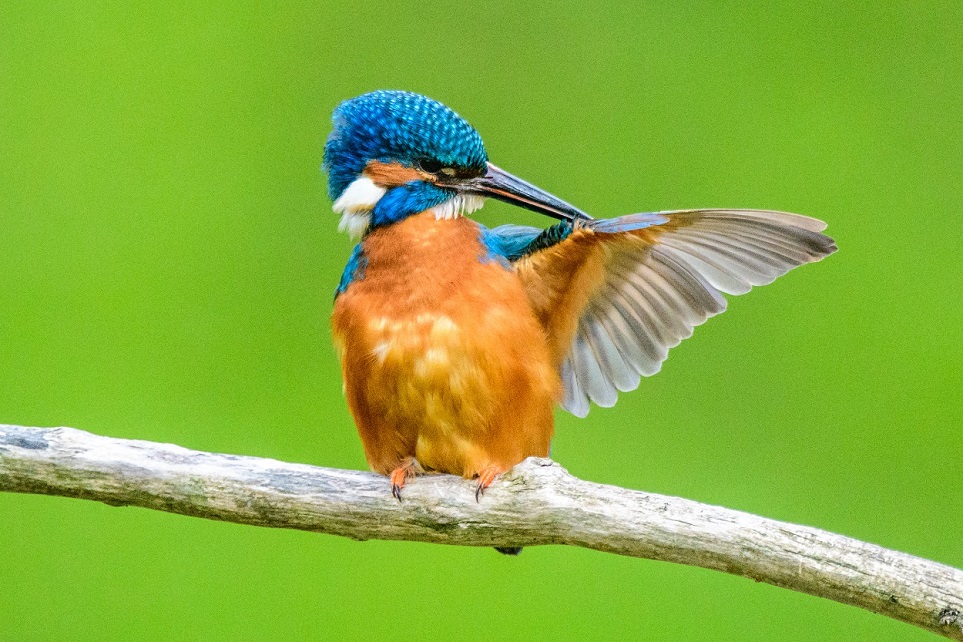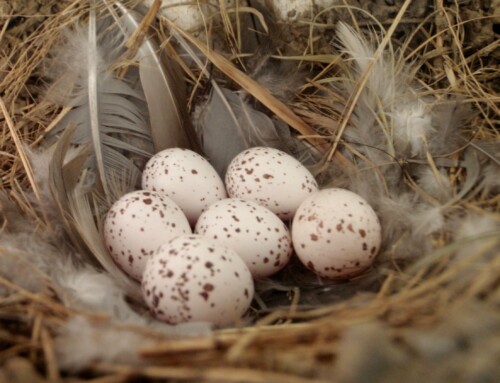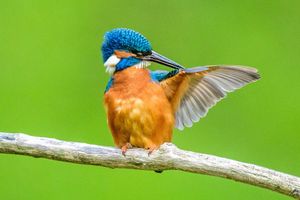 LINKED PAPER
LINKED PAPER
Olfactory camouflage and communication in birds. Grieves, L.A., Gilles, M., Cuthill, I.C., Székely, T., MacDougall‐Shackleton, E.A., & Caspers, B.A. 2022 Biological Reviews. doi: 10.1111/brv.12837 VIEW
Preen oil: a major source of odour in birds
Birds have a specialized gland located at the base of the tail called the uropygial gland (also called the preen gland). During preening, birds stimulate the gland with their bill to extract preen oil, a waxy secretion they smear onto their feathers. Preen oil has diverse functions, such as plumage maintenance, waterproofing and defence against ectoparasites. The functions of preen oil are nicely reviewed in Moreno-Rueda (2017). Interestingly, preen oil is also a major source of avian body odour. Therefore, to describe the odour of birds, researchers can analyse the chemical composition of preen oil. Some studies also use preen oil samples as a proxy for bird odour to conduct behavioural experiments, for example, to test if birds can discriminate among different odours of interest (see for example Grieves et al. 2019).
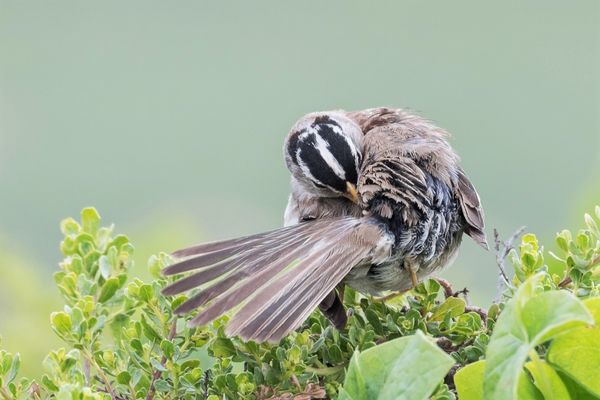
Figure 1 This White-crowned Sparrow (Zonotrichia leucophrys) is reaching toward its uropygial gland to get preen oil. Does it use preen oil for camouflaging the odour of its offspring and protect them from predators or for chemical signalling during mate choice? © Hayley Crews.
Intriguingly, in many species, the chemical composition of preen oil changes over the year, and specifically during the breeding period. In addition, sex differences in preen oil composition often arise during the breeding period. Why would the odour of birds change as the breeding season approaches? And why would sexes smell differently during the breeding season?
Why does the odour of birds change during breeding?
Seasonal and sex differences in preen oil composition could be partly explained by proximate mechanisms, like changes in hormones or diet, but we wanted to question the function of these changes. There are two main hypotheses, based on the smelly nature of preen oil, for the function of the seasonal changes in preen oil.

Figure 2 Hypotheses to explain the function of seasonal and sex differences in the chemical composition of preen oil (a major source of bird odour). These two hypotheses are non-mutually exclusive.
- First hypothesis: olfactory crypsis. This hypothesis states that the preen oil of incubating birds becomes less odorous during incubation to reduce the olfactory cues at the nest, thereby protecting eggs and young from detection by predators who search nests mainly using their sense of smell. This hypothesis was first formalized by Jeroen Reneerkens in his studies on shorebirds.
- Second hypothesis: sex semiochemical. This hypothesis posits that preen oil is used for mate recognition (sex discrimination) and/or mate choice (identification of high-quality or genetically compatible mates). This hypothesis was formalized by Leanne Grieves (co-first author) in our study. Other interesting hypotheses about sex semiochemicals in birds can be found in this review.
Note that these two hypotheses are non-mutually exclusive, and therefore both could be occurring at the same time.
A review of seasonal and sex differences in preen oil composition
While working on my PhD, I realized that studies that detected seasonal and/or sex differences in preen oil composition often speculate on the possible role of these differences (for example for olfactory crypsis or communication). But speculating too widely based on the results from a single species is delicate. So I thought that I should compile ALL the studies on seasonal and sex differences in preen oil composition to test if, when looking at the global picture, there is support for any of the two hypotheses.
I knew that Leanne Grieves, a researcher at McMaster University in Canada, wrote the first chapter of their PhD thesis about sex differences in preen oil composition. I contacted Leanne, and we decided to join forces to produce a stronger study together! We searched the literature and found that seasonal differences occurred in 95% of species and that sex differences occurred in 47% of species. We also realized that most studies were conducted in two bird orders: songbirds and shorebirds.
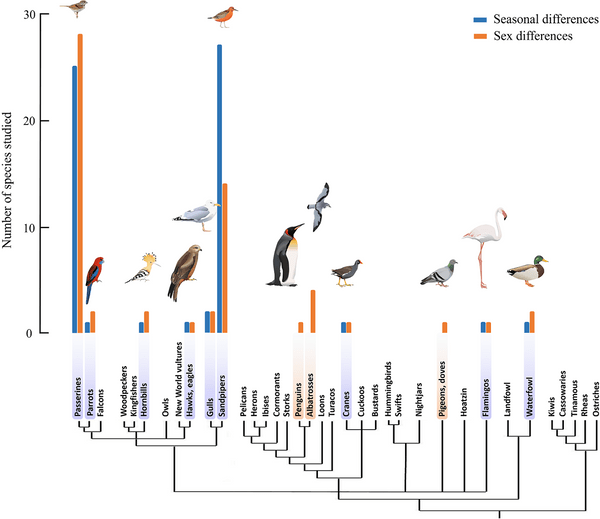
Figure 3 Bird species studied with respect to seasonal and sex differences in preen oil chemical composition. Most studies were conducted on songbirds and shorebirds.
Our comparative analysis finds support for both hypotheses
We then conducted a comparative analysis using data from 59 bird species to evaluate evidence for both hypotheses. Under the olfactory crypsis hypothesis, we predicted that seasonal changes in preen oil composition would be more common in the sex that incubates, and so especially in species that nest on (or near) the ground, as these species may be more vulnerable to predators that use their sense of smell to search for nests, like mammals (e.g., foxes, dogs, hedgehogs, boars). Similarly, we also predicted that sex differences in preen oil would be more likely in species where only one parent incubates than in species where both parents incubate. Under the sex semiochemical hypothesis, we predicted that sex differences in preen oil composition would be more likely during the breeding period than the non-breeding period.
We found that seasonal differences were more likely in the incubating than non-incubating sex, but so only in ground-nesting species, which supports the olfactory crypsis hypothesis. We also found that sex differences were more likely in species with uniparental than biparental incubation and were more likely during breeding than non-breeding, which is consistent with both the olfactory crypsis and sex semiochemical hypotheses.
A guide for future studies
With the currently available literature, we were not able to disentangle the two hypotheses. So, we presented several testable predictions that should allow researchers to disentangle the hypotheses. For example, to test the olfactory crypsis hypothesis, we predict that predators should be less able to detect nests treated with the preen oil of incubating birds compared to preen oil of non-incubating birds. To test this, one could compare the predator detection rate of artificial nests where eggs are smeared with preen oil secreted during incubation versus outside of incubation. To test the sex semiochemical hypothesis, we predict, among other predictions, that birds should use preen oil odour cues to discriminate between the sexes and among individuals that differ in quality, and this can be tested with behavioural trials using a Y-maze. The field of avian chemical ecology is growing fast, and we hope that our study will help it grow in the right direction.
References
Moreno‐Rueda, G. 2017. Preen oil and bird fitness: a critical review of the evidence. Biological Reviews 92: 2131-2143. VIEW
Grieves, L.A., Bernards, M.A., & MacDougall-Shackleton, E.A. 2019. Behavioural responses of songbirds to preen oil odour cues of sex and species. Animal Behaviour 156: 57-65. VIEW
Grieves, L.A., Gloor, G.B., Bernards, M.A., & MacDougall-Shackleton, E.A. 2019. Songbirds show odour-based discrimination of similarity and diversity at the major histocompatibility complex. Animal Behaviour 158,: 131-138. VIEW
Reneerkens, J., Almeida, J.B., Lank, D.B., Jukema, J., Lanctot, R.B., Morrison, R.G., et al. & Piersma, T. 2007. Parental role division predicts avian preen wax cycles. Ibis 149: 721-729. VIEW
Whittaker, D.J. & Hagelin, J.C. 2021. Female-based patterns and social function in avian chemical communication. Journal of Chemical Ecology 47: 43-62. VIEW
Image credit
Top right: A preening Common Kingfisher (Alcedo atthis) © Oliver Krüger.
If you want to write about your research in #theBOUblog, then please see here.


